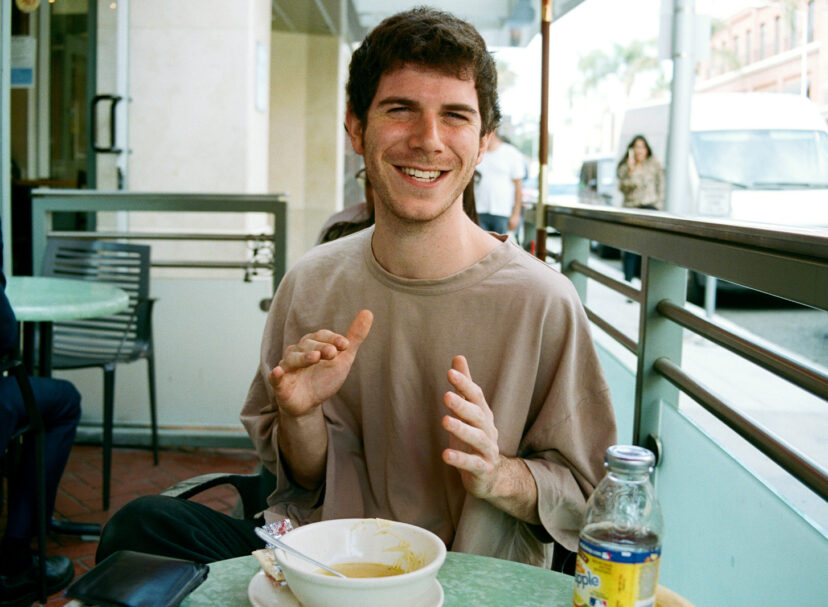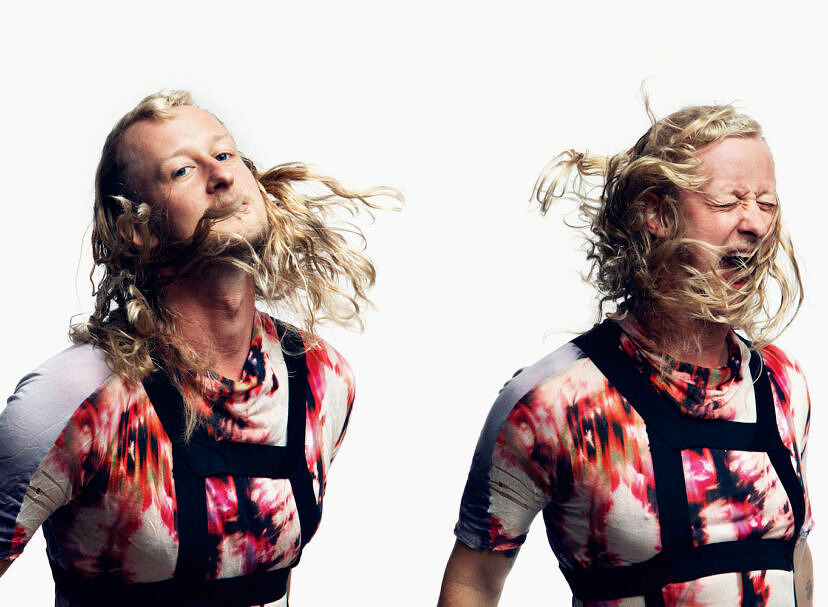Interview: Alec Coiro
All Images Courtesy of Shy Layers
Recently relocated to Atlanta and after decamping from his former home in Brooklyn, JD Walsh — the dynamo behind Shy Layers — has just released Midnight Marker. The music on the album is, as the band name suggests, layered, giving the listener the option to either focus on the detail or let the groove wash over them.
A fine artist with a focus on video, it’s no surprise that he has created his own music videos for the album. And if you watch (and listen) closely, you’ll realize the textural themes in his music and videos are all of a piece. The track we’re premiering today — “Tomorrow” — is a prime example of Walsh’s use of texture on every level. It’s also masterfully groovy. Take a listen and read on for more insights from Shy Layers.
You’re an artist as well as a musician. Can you tell us about your art practice and how it intersects with the music you make?
Absolutely. My art background is mainly in video, but over the years that has expanded into the realm of objects. I used to work much more with real, representational imagery, but lately the work has become fairly abstract. I’m currently working on a series of wall-reliefs that are sort of these very stripped-down landscapes.
I like to move pretty fluidly between art and music, though sometimes it’s hard when you really want to immerse yourself in one vs the other. But I often say that I don’t see that much of a difference in making visual art vs music – you still have to ask yourself the same questions, regardless of medium. Either way you’re dealing with texture, scale, focus, intensity, etc. A lot of this is about trusting your own instincts, and being self-critical while at the same time allowing some room for failure. Easier said than done.
The multi-instrumental multi-tracking achieves the sort of groove normally reserved for an ensemble vibing off each other in a live environment. How are you able to multitrack and still keep things vivacious?
I think this is mostly about creating systems that are kind of open-ended. I rarely write songs that are totally worked out from beginning to end before they are recorded. In a sense, the songs are just byproducts of the recording and editing process, and hopefully that process of discovery is somehow imbued in the finished product. Sort of like seeing the rings on a tree, they have some history that I hope remains.
Another aspect might be that the songs often start as improvisations. The modular synth has been a great tool for me in this regard, because it’s easy to end up in musical places that would be really hard to plan out ahead of time. It’s also really helpful in terms of its limitations – there’s no memory or presets, so once a patch is gone, it’s really gone. This helps me not get too bogged down with one idea, and not get too precious about things.
What is the origin of the name Shy Layers?
It’s a software term. When editing video or audio, you sometimes end up with a bunch of layers in a composition. Some programs allow you to hide some of these as “shy tracks” or “shy layers” to make the composition more manageable. It comes from my years of doing editing jobs to support myself. I always liked those terms as these little poetic phrases and thought it suited the general concept of this project. I’m not particularly shy, though 🙂
A lot of this is about trusting your own instincts, and being self-critical while at the same time allowing some room for failure.

Tell us about your background. We know you move between Atlanta and Brooklyn. Where are you from originally?
I lived in Brooklyn for about 15 years and moved to Atlanta right before I started recording Midnight Marker. I grew up in Delaware, about 20 miles south of Philadelphia. When people around here ask me where I’m from I usually just say “Philadelphia” because no one knows where Delaware is.
What’s the process like for your videos? Who do you collaborate with and involved are you in producing them?
Some earlier videos were done by Ben Sisto who is an artist, lecturer, researcher that I admire. But lately I’ve been doing the videos by myself. “Gateway” and “No Road” were entirely self-produced. I’ve really enjoyed the process – it’s one of the few chances I get to literally combine my art and music worlds. My art school background and my various day jobs have given me some decent video chops, so it’s nice to be able to use that for myself for a change. It usually just involves setting up a set in my art studio and me trying to convince my wife Jaime to operate the camera. She’s a better photographer than I am so that certainly helps. I’ll grab footage either against a green screen, or for “No Road” I made a set with objects attached to motors and a smoke machine. For that one I was really inspired by experimental animation from the 60’s to 90’s, so I focused heavily on that in post-production. It was a lot of fun to make.



